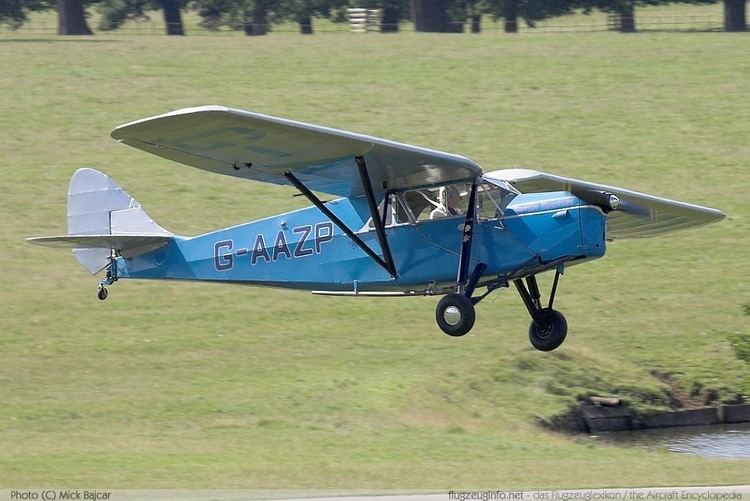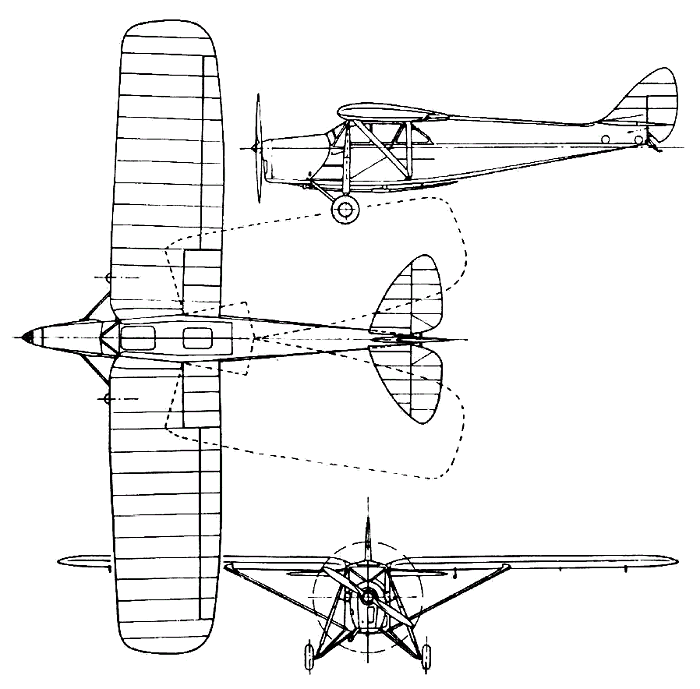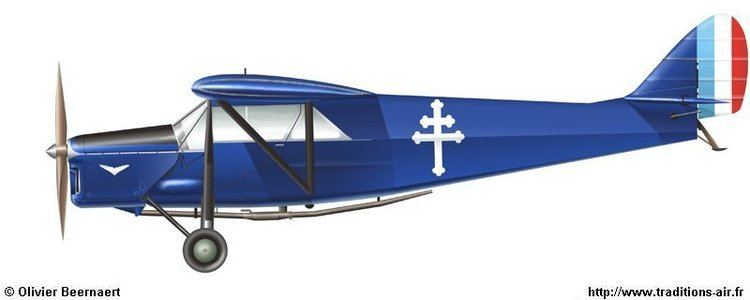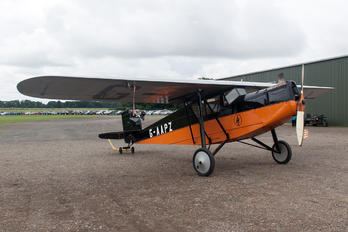Top speed 206 km/h Length 7.62 m First flight September 9, 1929 | Wingspan 11 m Introduced March 1930 Manufacturer de Havilland | |
 | ||
Fooling around with a de havilland puss moth
The de Havilland DH.80A Puss Moth is a British three-seater high-wing monoplane aeroplane designed and built by the de Havilland Aircraft Company between 1929 and 1933. It flew at a speed approaching 124 mph (200 km/h), making it one of the highest-performance private aircraft of its era.
Contents
- Fooling around with a de havilland puss moth
- Design history
- Technical faults
- Operational history
- Record breaking flights
- Variants
- Operators
- Specifications DH80
- References

Design history

The unnamed DH.80 prototype which first flew in September 1929 was designed for the flourishing private flying movement in the United Kingdom. It was a streamlined all-wooden aircraft fitted with the new de Havilland Gipsy III inverted inline engine that gave unimpeded vision across the nose without the protruding cylinder heads of the earlier Gipsy II engine.

After the prototype was tested, the aircraft was redesigned with a fabric-covered steel-tube fuselage and as such redesignated the DH.80A Puss Moth. The first production aircraft flew in March 1930 and was promptly sent on a sales tour of Australia and New Zealand. Orders came quickly and in the three years of production ending in March 1933, 259 were manufactured in England. An additional 25 aircraft were built by de Havilland Canada. Most were fitted with the 130 hp (97 kW) Gipsy Major engine that gave slightly better performance.

The Puss Moth was replaced on the production line by the de Havilland DH.85 Leopard Moth that, with a plywood fuselage, was both cheaper to build, and lighter weight. Being lighter, the Leopard Moth had better performance on the same rather modest 130 hp (97 kW) Gipsy Major engine.
Technical faults

Early in its career, the DH.80A was plagued by a series of fatal crashes, the most famous being to Australian aviator Bert Hinkler while crossing the Alps in CF-APK on 7 January 1933. The cause was eventually pinned down to "flutter" caused by turbulence leading to wing failure - this was corrected by stiffening the front strut with a jury strut to the rear wing root fitting. One aircraft took part in the Challenge 1934 European tourist plane contest, but dropped out because of an engine fault on one of the last stages.
Operational history

Most DH.80As were used as private aircraft, though many also flew commercially with small air charter firms for passenger and mail carrying. Seating was normally two although in commercial use two passengers could be carried in slightly staggered seats with the rear passenger's legs beside the forward passenger seat. The wings folded backwards for storage, pivoting on the rear spar root fitting and the V-strut root fitting, a system used on other De Havilland light airplanes of the period.
Surviving British civilian aircraft were impressed into service during the Second World War to act as communication aircraft. A few survive into the early 21st century.
Record breaking flights
During the early 1930s, DH.80s were used for a number of record breaking flights. In early 1931, Nevill Vintcent made the first flight from England to Ceylon in G-AAXJ. In July–August 1931 Amy Johnson made an eight-day flight with her co-pilot, Jack Humphreys to Moscow and Tokyo in G-AAZV, named "Jason II", completing the leg to Moscow in one day. Late in 1931, the Australian Bert Hinkler piloted a Canadian-built CF-APK on a series of important flights including New York City-Jamaica, Jamaica to Venezuela, and a 22-hour, west-east crossing of the South Atlantic, only the second solo transatlantic crossing. In November 1931, Miss Peggy Salaman, the 19-year-old London girl who set out to beat in G-ABEH, named "Good Hope", the record for the flight from London to Cape Town, has succeeded in arriving in Cape Town at 5.40 a.m., with Mr. Gordon Store, her co-pilot and navigator, having beaten the previous record set up by the late Commander Glen Kidston, by more than one day.
Most famous of the record breaking Puss Moths was Jim Mollison's G-ABXY, "The Heart's Content" which completed the first solo east-west Atlantic crossing in August 1932 from Portmarnock Strand near Dublin to New Brunswick, Canada and the first east-west crossing of the South Atlantic from Lympne Aerodrome to Natal, Brazil in February 1933. His wife Amy Johnson made record flights between England and Cape Town using G-ACAB, "Desert Cloud" in 1932. C.J. Melrose flew VH-UQO, named "My Hildegarde" in the 1934 MacRobertson Air Race. They finished overall seventh and second on handicap in a time of 10 days 16 hours.
Variants
Operators
Specifications (DH.80)
Data from British Civil Aircraft since 1919 (Volume 2).
General characteristics
Performance
